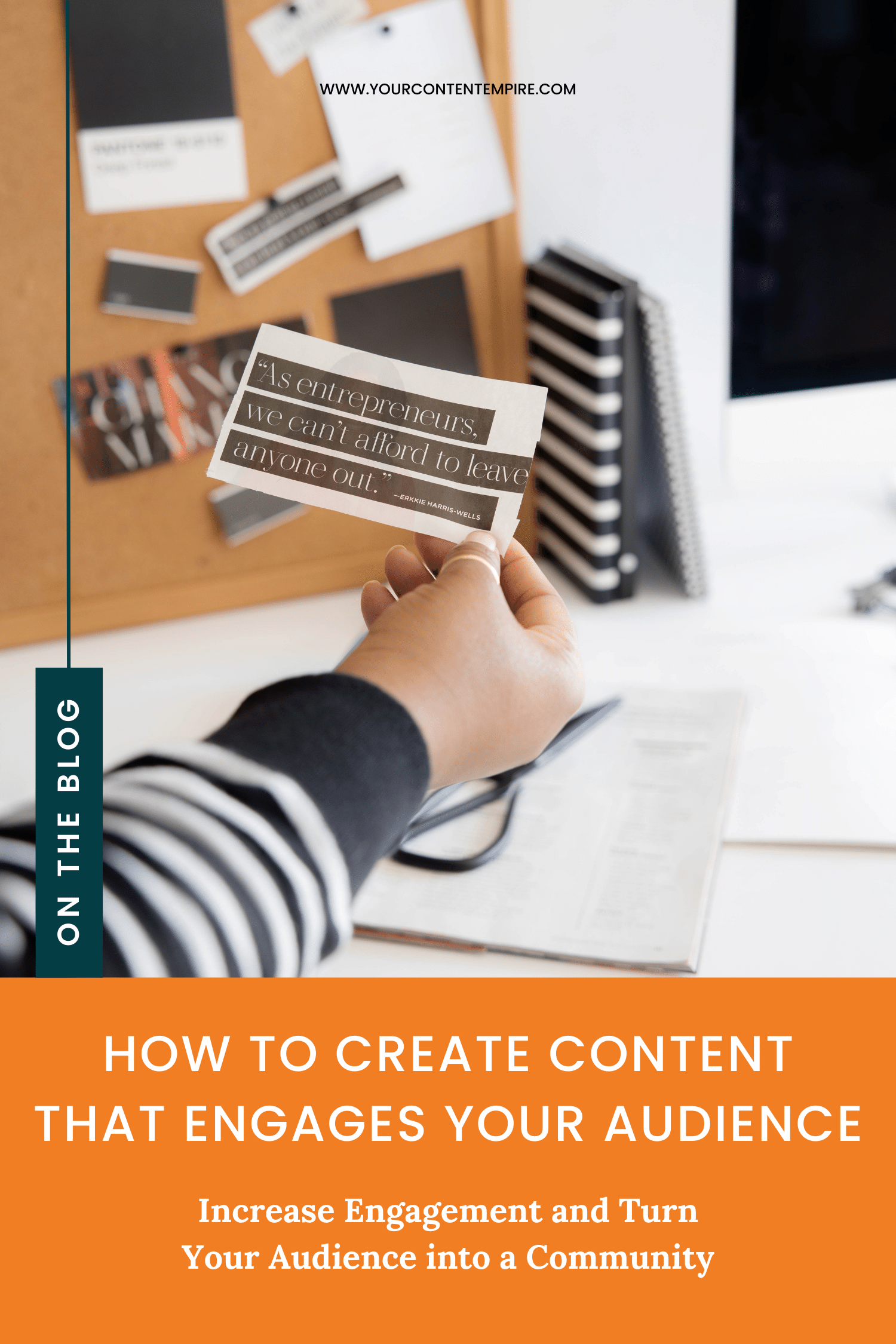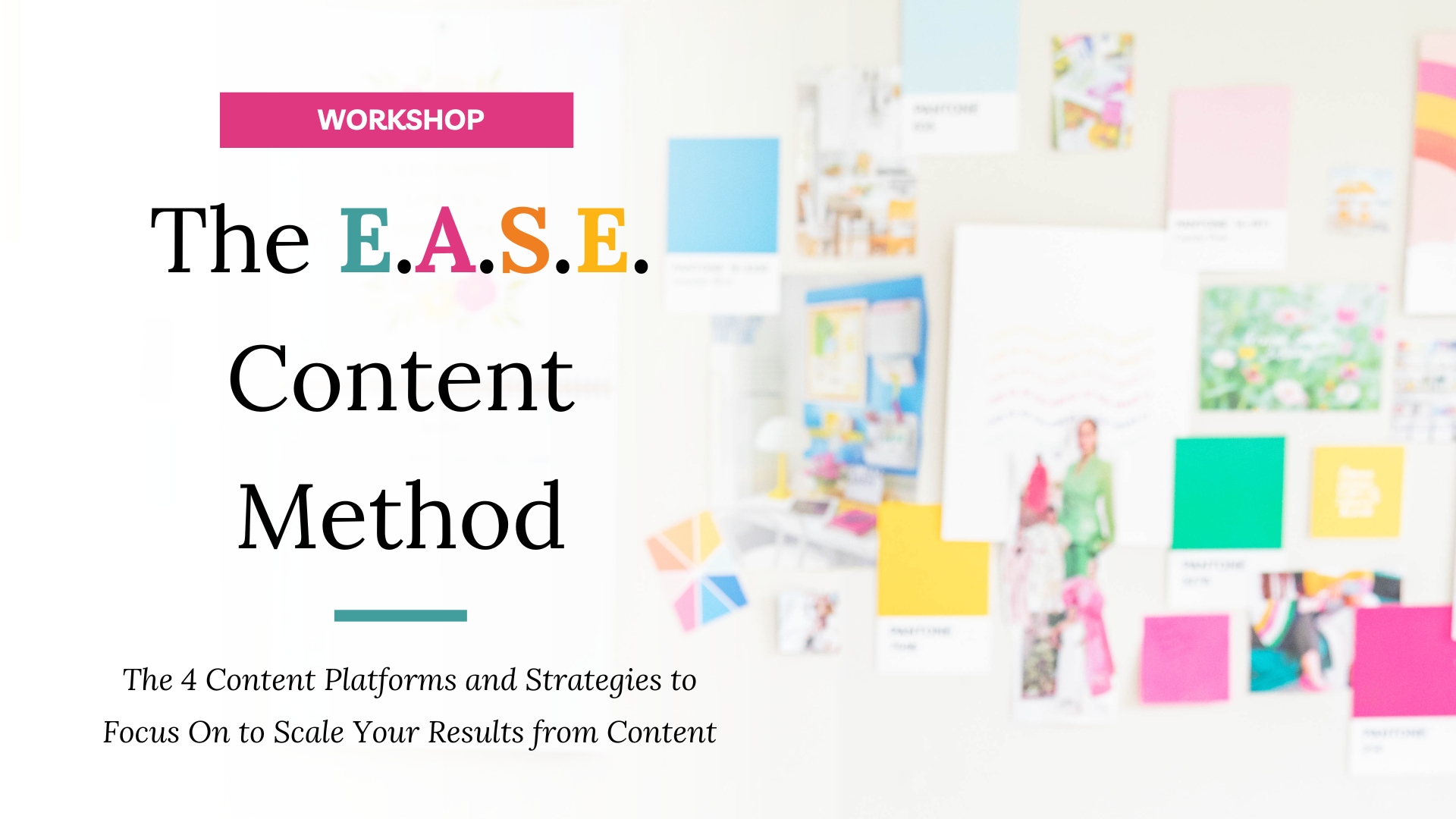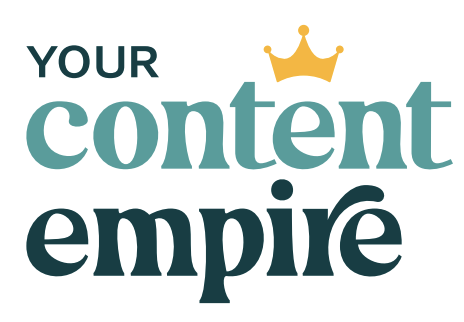Over the course of the E.A.S.E. Content Strategy Method series, we've been covering the four different types of content that should be present in any content strategy.
We've talked about your expertise content. Click here to read the post
We've talked about your attraction content and how you are getting in front of a new audience. Click here to read that post.
And last week, we talked about your selling content and how to move your audience to the point of sale for your offers. Click here to read that post.
And in this post, we're going to be talking about the final type of content that rounds out the E.A.S.E. Content Strategy Method, which is your engagement content.
How Engagement Fits into the E.A.S.E. Content Strategy Method
We've been saving the best for last. It's the last but not least. And the last dance is truly saved for this type of content.
Your engagement content is the most important because it's all about how you are treating and nurturing the people who've already said yes to you, the people who've already opted in, and the people who are already showing up for you and your content.
I see many entrepreneurs super focused on list building and audience growth, to the complete detriment of taking care of the people who've already joined their community.
And so, one of the reasons they're not seeing the results they'd like is because they're not treating their existing people as well as they should. And so they have higher email list atrophy (subscribers who become unengaged or unsubscribe) than someone who is showing up really consistently and in an engaging way for those people already on their email list and already in their communities.
It is possible to make great revenue with a small list and it all comes down to how you show up for your people.
If you can master the push and pull of list building while also taking care or and engaging your existing community, you are going to have no issues reaching your business goals. But it truly is a balance because your business requires both.
Kevin Kelly talks about the concept of 1000 true fans in his book (here’s a link). And it’s about realizing that as a successful content creator (and business), you don’t need millions up millions of customers or clients. You really only need 1000 diehard fans who’ll buy anything you put out.
Here’s how the math works: #1 – you have to create enough each year, on average, you can earn $100 profit from each true fan. #2 – you must have a direct relationship with those fans, in that they pay you directly. If you can keep the full $100 of each true fan, then you need only 1,000 of them to earn $100,000 per year. So even if your goals are bigger than that, it's a good perspective to help you realize that more isn't always needed.
And so even if you're not starting at 1000 true fans, can we start with that one true fan than those 10 true fans, then 100 true fans.
Everyone starts somewhere.
The critical component in creating these true fans comes down to how you are staying in touch with them, your relationships, and interactions with them. And that comes down to this engagement piece of the E.A.S.E. Content Strategy Method.
So in this post, we're going to be talking about how to choose that platform where you're going to be engaging with your people and how you can use it to start building up that true fan base.
Choose 1 Platform to Focus on for Engagement
Our first step here is to choose the platform that you'll be focusing your engagement efforts on. We want to make sure that you're just choosing one and so it has to be the right one.
Here are some things to consider in making your decision:
#1 – Your people are there: Meaning that you're not choosing a platform where the people you want to be working with wouldn't be caught dead on. I mean, you wouldn't go on to TikTok to connect with six and seven-figure entrepreneurs, would you?
#2 – They like hanging out there: We need to make sure that they're actually having conversations and engaging on this platform. So you want to prioritize community-centric platforms, rather than traffic building platforms.
For instance, you wouldn't necessarily find your people and have conversations with them on Pinterest, so it's probably not the best engagement platform.
So depending on where your people are and their behaviours on those things, you want to take that into account when deciding on which platform you're going to focus on.
#3 – We also need to make sure that it's something that you like: Because engagement takes time, and to be engaging, you have to be engaged – an impossible thing to do if you hate every minute of it. This type of strategy takes time and requires that you show up daily, ideally 30 to 60 minutes every single day to be fostering these relationships and having these conversations.
Some places to consider for your engagement platforms: Instagram, Facebook groups, LinkedIn, and anywhere else where there's more of a community where people have dialogue.
Schedule Time To Show Up Every Day
This engagement part of your E.A.S.E. Content Strategy Method is going to take the most time. Still, because one of the critical components of the E.A.S.E. framework is that you're not trying to focus on every single platform at once, you're hopefully going to have more time to dedicate to this engagement platform, which is going to help you get a lot further faster than if you were diluting all of your efforts and trying to spend your time on all of the platforms at the same time.
So we want to make sure that you schedule some time regularly, and I recommend 30 to 60 minutes every single day.
You can schedule it first thing in the morning or in the afternoon. Think about how it fits into your schedule and work patterns.
So for myself, I know that I like to schedule my engagement time for the afternoon after I've wrapped up my focus time on projects. This is my treat at the end of the day to get to go and connect with my people.
Once you choose a time, go and add it to your calendar so it's a non-negotiable.
Prioritize Conversation
The key to the engagement platform is that it is not a one-way conversation. We are completely prioritizing two-way dialogue here. Make sure you’re showing up live and engaging in real-time more than you’re scheduling content ahead of time.
I like to build an engagement checklist of things I do during that 30-60 minute engagement window so I don’t waste time.
On that list, I’ll include things like:
- Being responsive – Respond to any comments or messages I’ve received since my previous engagement session. Anytime someone adds a comment or DM you or something like that, you want to make sure that you are responding to them within a timely manner. This tells them that they're not being ignored that you value their input that you see them that you hear them that you've seen their comment. This helps to make them feel valued which means they're going to show up more on your platforms and spur that engagement,
- Being engaging – Start conversations by going to other people’s accounts and responding to their content this will help you connect with more of the right people. So maybe you're clicking over to your follower's pages as well and asking them questions on their content as a way of building up that engagement and building that relationship.
- Publish a piece of content – instead of this being a typical promotional post for your new webinar or your product, you want to focus on asking questions sharing behind the scenes and providing value. But always with a question or a call to action that is going to spur discourse and engagement.
An extra tip: Because you're going to be having so many conversations here, try to make a point of saving the language that people use to describe their struggles, their goals, their aspirations, their grievances around your topic. You’ll be able to use their own words for your sales copy and expertise building copy. So in this way, your engagement time is also market research for the other types of platforms that you're going to be using. Bonus!
Define Your Metrics for Success
One of the first orders of business after you have chosen the engagement platform you want to focus on is to establish your benchmarks.
So go back and measure what type of engagement you're already getting, how much traffic it’s driving to your website and your follower count. Then as you focus on growing this platform and building up engagement on this particular platform, you'll have a benchmark to measure against.
I know that some of these metrics I've mentioned are vanity metrics, meaning that they don't necessarily lead to results, but they can also be good indications that you're moving in the right direction.
Create Your 30-Day Engagement Plan
Whenever you're starting something new, I think you should stick with it for at least 90 days before you know if it's going to work, because oftentimes, some of the seeds you planted 90 days ago are just starting to fruit now. It's more of a long-term game, especially with this engagement strategy.
But 30 days is a great time to define the action steps that you're going to take, define the small wins that you're going for, and measure whether or not those are moving in the right direction. So commit for 90 days, but plan for 30 days at a time in terms of how you're going to show up.
In your 30-day action plan, you'll want to include these 10 things..
- What is the big goal that you're working towards engagement-wise?
- What are the small wins that you're hoping to achieve within this 30 day period?
- What are your success metrics?
- What else are you measuring or tracking that’s going to give you a clue that you're headed in the right direction?
- What is your learning goal? Can you try to learn something new about that platform to understand it better every week?
- What are your daily activities?
- What are your weekly activities?
- And what do you want to try to do once within that 30 day period?
- When are you going to do these activities? Put them on a calendar
- Who are three people/accounts who are using this platform well? What can you learn from them?
What’s Next
At the end of 30 days, you should know whether you're moving in the right direction or if you enjoy the platform at all.
Want to Learn to Put This Strategy Into Action?
Get instant access to my E.A.S.E. Content Strategy Workshop where you'll learn the 4 content platforms and strategies to focus on to scale your results and sales from content. Plus you'll get my exclusive EASE Content Planning Spreadsheet for FREE ↓












